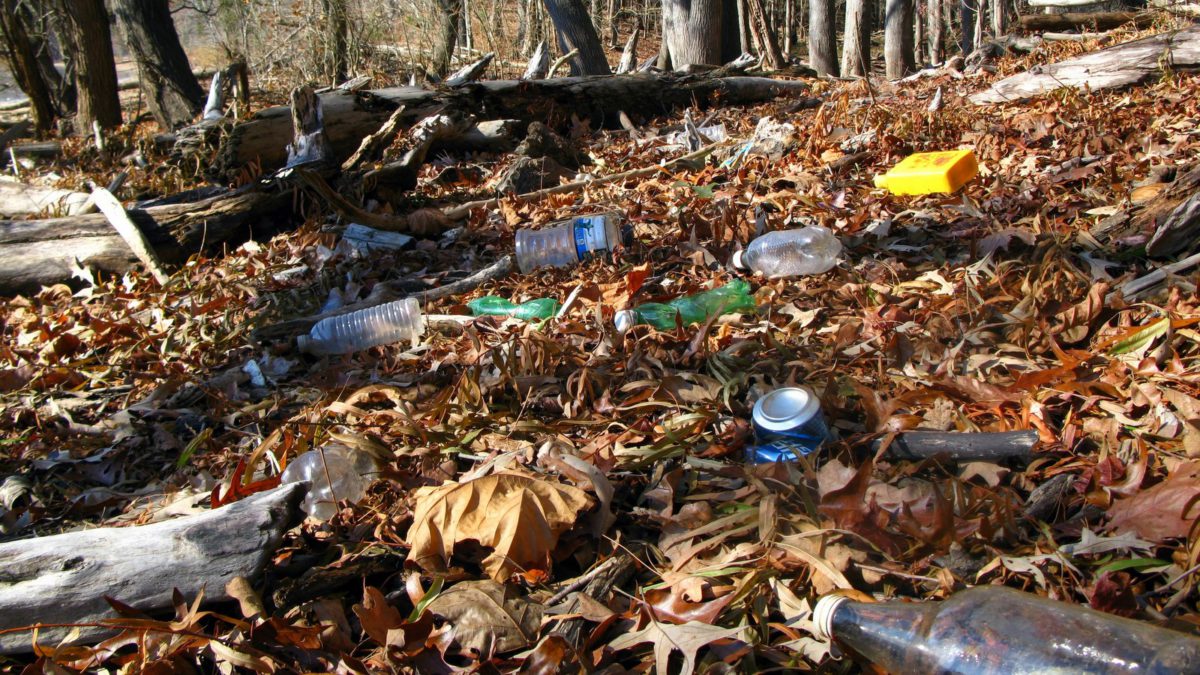A couple of weekends ago a group of us celebrated summer’s end on the banks of the Shenandoah River in Virginia at the Watermelon Park Music Festival. It was a car-camping affair with family clans arranged in loose camps under the clear blue day sky and starry nights. The three thousand or so people gathered for near non-stop merrymaking involving music, food and fun in the river. In that there was success!
On Saturday morning I led a river clean up along the accessible banks within the festival grounds. The idea was to see what we could find in 45 minutes and talk about the durability of materials, the flow of litter into oceans, and rate of decomposition of common items. Of course, the rates of decomposition are not precise, but serve as a good reminder of how durability of a material is called upon to serve many one-time-use purposes in our convenience-based consumptive economy. It was a chance to also discuss how uncontrolled disposal can create macro pollution in one place that can contribute to micro pollution in distant places, such as the accumulation of plastic fragments in the oceans.
On a cool, foggy Saturday morning, the clean up volunteers met at the beautiful Shenandoah River and set off on their quest for river trash. Among the group were a few little people who were the most excited by the treasure hunt. The wee ones were thrilled to have their own giant latex gloves. We joked that the little ones were the detail crew finding smaller bits while the adults moved rapidly to comb the riverfront. The adults, too, were diligent. After 45 minutes, the total recyclable booty included two plastic grocery bags full of cans, can tops, and plastic and glass beverage bottles. The recyclable items were predictable since this riverfront park is routinely used for family camping and as a tubing destination. The trash part of the litter filled four grocery bags.
The trash included two diapers, fishing line, plastic beverage holders, a ‘styrofoam’ cup (properly called expanded polystyrene or EPS), garment fabric, a sock, two golf balls, lots of cigarette butts, a sturdy dog frisbee, a child’s sand scoop, assorted pieces of metal, ceramic tile shards, two left-foot flip flops, a baseball cap, and a bunch of junk fragments of containers, packaging, and fabric. The recyclables and the trash were pretty beat up by the water action over shallow rocky river bed. The result of such degradation is fragmentation of litter (macro pollution) into ever smaller bits (micro pollution) that become unrecoverable permanent pollution. The type of pollution that floats out to sea, and can be confused by wildlife for food, or can cause general environmental damage through accumulation. The material refuse represents significant technical and financial investments employed for one-time uses.
Since the river condition offers variable current strengths and a relatively rocky riverbed, many types of materials deteriorate faster than if the same litter were to be found in a ditch beside a highway. The graphic below estimates the lifespan of many of the items listed above in marine conditions and serves as a guide for this discussion.

Graphic by NOAA
The durability of most of the materials used in common items we collected is startling, and highlights the need for material stewardship policies that apply to the whole society and positively affect the behaviors of both product producers and citizens. It also identifies the critical role of the citizen in making sure litter is avoided and collected when found. Sustainable material management depends on you and me to do our part to use materials wisely through considered consumption habits; by understanding that materials have inherent toxicity (if not directly to us than indirectly through the food chain and the environment); by practicing material recycling and composting at home and work places; and picking up trash instead of ignoring it and walking by. Together there is a chance to reverse the trends of growing material consumption and improving material stewardship.
Learn more: An article on the demographics of litter flows. | Information on marine debris | Plastic marine debris | U.S. EPA’s annual report on solid waste in the United States.
Categories
Durable Litter: A Profile from a River Walk


